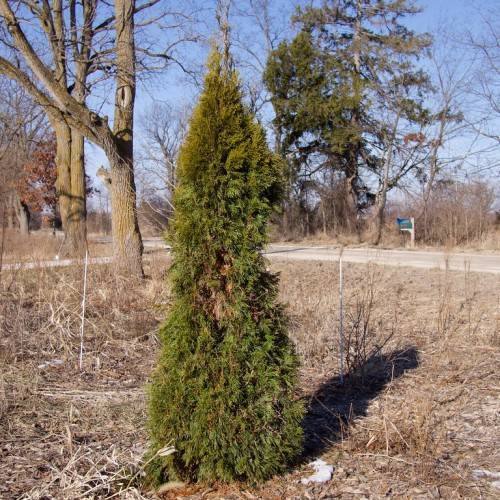
American arborvitae
Thuja occidentalis 'Smaragd'
Cycle:
Perennial
Watering:
Frequent
Hardiness Zone:
2 - 7
Flowers:
Flowers In Spring
Sun:
Full sun, Part sun/part shade
Soil:
Sandy Loamy Clay Rocky
Cones:
Yes
Leaf:
Yes
Growth Rate:
Moderate
Maintenance:
Low
Drought Tolerant:
Yes
watering
American arborvitae needs regular watering for the first 2 years while it is establishing its root system. During this time, water deeply and regularly for the best results. During the established period, water deeply 1-2 times per week and during hot dry spells, watering should increase to 1-2 times per day. Aim for 2-3 inches of water per week to keep the plant hydrated and healthy. Avoid over-watering which can cause root rot.
sunlight
American arborvitae thrives in a full-sun location that receives at least 6 to 8 hours of direct sunlight during the day. It typically does not grow in shaded areas and prefers exposure to sunlight throughout the day. In sunny locations, the American arborvitae can tolerate light shade in the afternoon, during the hottest parts of the day. In the winter months, it does best in warmer climates with ample sunshine as temperatures drop.
pruning
American arborvitae is best pruned in late winter or early spring. Prune away any dead or damaged limbs, as well as any limbs that are growing inwards, growing in a strange direction, or crossing over another limb. Light pruning can be done throughout the year to maintain the desired size and shape. Remove no more than ⅓ of the foliage at any 1 time. For a more severe pruning, such as to reduce the size, it is better to wait until late winter or early spring, before new growth begins.
